In this day and age, it is important that a pool owner has a good working knowledge of their pool needs. All pools vary in their need for certain chemicals. In the same neighborhood, using the same tap water, each pool has its own special requirements.
These variances can be caused by something as simple as what kind of plant life you have in your backyard or how much direct sunlight your pool receives. By proper water testing and a basic knowledge of the requirements of your pool, you can be sure to keep your pool clean and safe.
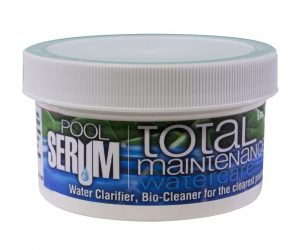 The Pool Serum Total Maintenance water care is environmentally friendly and will work for up to a full month in your swimming pool. In addition, this Bio-Cleaner and Clarifier is a concentrated gel that works efficiently and quickly. The Pool Serum Maintenance will work in conjunction with your current chemical program.
The Pool Serum Total Maintenance water care is environmentally friendly and will work for up to a full month in your swimming pool. In addition, this Bio-Cleaner and Clarifier is a concentrated gel that works efficiently and quickly. The Pool Serum Maintenance will work in conjunction with your current chemical program.
Features:
 Baquacil is a chlorine-free brand of pool cleaning products that will keep your pool looking its best all season long. Also, Baquacil pool products help you give your pool an excellent look in less than 24 hours. Because of the fact, there is no chlorine, your pool water will not be harsh on the eyes or clothes as you swim and enjoy your pool.
Baquacil is a chlorine-free brand of pool cleaning products that will keep your pool looking its best all season long. Also, Baquacil pool products help you give your pool an excellent look in less than 24 hours. Because of the fact, there is no chlorine, your pool water will not be harsh on the eyes or clothes as you swim and enjoy your pool.
The Baquacil brand has a variety of products to choose from to help maintain your pool. From Oxidizers to Sanitizers they have it all. In addition, your friendly pool experts at Sunny’s Pools and More can help you find the right products for your pool. Visit us today at any one of our great locations.
Nature2 is a sanitizing system that uses patented mineral-bed technology to provide crystal clear water and improved water quality. Working with the pool filtration system, Nature2 uses elemental minerals that combine with a small amount of chlorine to inhibit bacteria growth and eliminate contaminants. Minerals make the water noticeably softer, and less chlorine means a lower potential for red-eye, dry skin or foul odors. With Nature2, your swim experience is clean, fresh, and gently soothing.
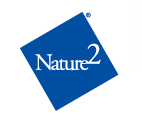 Extensively tested and proven to sanitize your water more effectively than chlorine-based treatments alone, Nature2 uses precise mineral combinations for its pool and spa treatments. Its Controlled Release Technology provides precise amounts of minerals in the water at any one time, ensuring optimum cleaning and no staining. In pools, silver and copper work in conjunction with the small level of chlorine to destroy bacteria and other organics. Nature2 Spa combines silver, and other trace elements, to effectively sanitize even at the higher water temperatures. When used with MPS, the most recommended oxidant for spas, Nature2 Spa becomes the only EPA approved complete, non-chlorine sanitizing system.
Extensively tested and proven to sanitize your water more effectively than chlorine-based treatments alone, Nature2 uses precise mineral combinations for its pool and spa treatments. Its Controlled Release Technology provides precise amounts of minerals in the water at any one time, ensuring optimum cleaning and no staining. In pools, silver and copper work in conjunction with the small level of chlorine to destroy bacteria and other organics. Nature2 Spa combines silver, and other trace elements, to effectively sanitize even at the higher water temperatures. When used with MPS, the most recommended oxidant for spas, Nature2 Spa becomes the only EPA approved complete, non-chlorine sanitizing system.
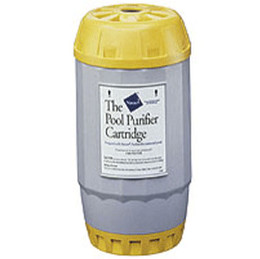 An industry leader for over 18 years, Nature2 is the most successful mineral-based system on the market – installed in over 300,000 pools and spas worldwide, and carried by more than 5,000 dealers. With 17 patents worldwide and 20 more pending, this low-chlorine alternative truly is the future of pool maintenance.
An industry leader for over 18 years, Nature2 is the most successful mineral-based system on the market – installed in over 300,000 pools and spas worldwide, and carried by more than 5,000 dealers. With 17 patents worldwide and 20 more pending, this low-chlorine alternative truly is the future of pool maintenance.
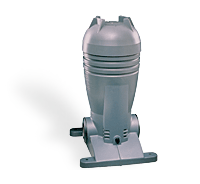 Imagine water that is clean, clear and as smooth as silk. Nature2 improves your overall pool and spa experience with patented mineral technology that sanitizes with less chlorine while providing natural water conditioning and exceptional water clarity.
Imagine water that is clean, clear and as smooth as silk. Nature2 improves your overall pool and spa experience with patented mineral technology that sanitizes with less chlorine while providing natural water conditioning and exceptional water clarity.
SeaKlear® HaloSource brand offers a wide range of pool and spa products guaranteed to keep pools, spas and water parks clean and clear. Our water treatment solutions give you sparkling clean pool or spa water, while our stain removal products keep pool surfaces free of blemishes and algae buildup. By reducing water usage and minimizing the use of harsh chemicals, our products extend the life of your pool or spa and help protect the environment.
![]() SeaKlear Natural Clarifier naturally clarifies cloudy water with easy, weekly applications. This product is safe to use with all sanitizers. It removes excess oils and lotions to prevent scum at the waterline. Natural Clarifier is just that: all-natural.
SeaKlear Natural Clarifier naturally clarifies cloudy water with easy, weekly applications. This product is safe to use with all sanitizers. It removes excess oils and lotions to prevent scum at the waterline. Natural Clarifier is just that: all-natural.
There are no thickeners added and it is environmentally safe and will not harm plants or animals. The unique molecular shape and electrical charge of this product allow it to entrap and aggregate heavy metal particles, including manganese, copper, and iron, which have come out of solution. It also improves filtration in the pool.
![]() SeaKlear Yellow Klear for Pools works with chlorine to treat yellow and green algae. This product is intended for use only with chlorine pools. After application, it will leave pool water clean, clear, and algae-free.
SeaKlear Yellow Klear for Pools works with chlorine to treat yellow and green algae. This product is intended for use only with chlorine pools. After application, it will leave pool water clean, clear, and algae-free.
Yellow Klear for Pools is an economical and effective way to rid your pool of yellow and green algae.
SeaKlear Thick Tile & Vinyl Cleaner for a pool is designed to remove film, oil and scum lines from pool tile, vinyl, and grout.
This product is non-abrasive, yet still cleans deep down into pores, effectively removing tough stains.
![]() SeaKlear Phosphate Remover works better and does more than other phosphate removers. Sea Klear – Phosphate Remover Features: One Quart removes up to 3,000 ppb of orthophosphates per 20,000 gallons of water.
SeaKlear Phosphate Remover works better and does more than other phosphate removers. Sea Klear – Phosphate Remover Features: One Quart removes up to 3,000 ppb of orthophosphates per 20,000 gallons of water.
Proven to eliminate phosphates from fertilizers, rainwater, soaps, decaying vegetation, and other pollutants. Non-toxic – 100% safe for your family and the environment. Quick, easy, cost-effective, and simple to use.
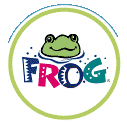 POOL FROG knows why you bought your pool in the first place—to have fun. We know the last thing on your mind should be pool care. POOL FROG gives you a reliable way to have fresh, clean, clear water in your family’s pool.
POOL FROG knows why you bought your pool in the first place—to have fun. We know the last thing on your mind should be pool care. POOL FROG gives you a reliable way to have fresh, clean, clear water in your family’s pool.
It’s easier too, with pre-filled containers that are recycled or discarded when empty. So this summer, put POOL FROG in charge and simply enjoy it!
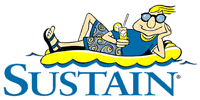 Over 20 years of proven performance has shown that the Sustain 3-Part System provides you with an effective and easy-to-use pool care routine. The use of other chlorine products often results in too little or too much chlorine. Sustain, The Intelligent Pool Care System is formulated and designed to deliver chlorine more evenly than conventional pool care chemical systems. Also, as part of this System, Sustain Summer Shield is the brains of the program.
Over 20 years of proven performance has shown that the Sustain 3-Part System provides you with an effective and easy-to-use pool care routine. The use of other chlorine products often results in too little or too much chlorine. Sustain, The Intelligent Pool Care System is formulated and designed to deliver chlorine more evenly than conventional pool care chemical systems. Also, as part of this System, Sustain Summer Shield is the brains of the program.
Also, this product actually holds backup chlorine in reserve, and only releases it when it senses your pool’s level of chlorine protection (against algae and bacteria growth) has been depleted. (<1 ppm
CHLORINE is a chemical that destroys bacteria and algae. But, by destroying these invaders the chlorine itself is used up. Other factors that contribute to lowering the chlorine level are sunlight, bathing load, pH imbalance, and airborne contaminants.
Because chlorine is a chemical, it reacts with everything in your pool. Leaves, debris, lawn fertilizer, and animals all cause the chlorine in your water to work harder to destroy the bacteria brought into the water. After the chlorine has worked to destroy these intruders, the level of chlorine that remains is called chlorine residual. This is the amount of chlorine that is still working to prevent the growth of bacteria and algae.
Never allow the chlorine level to fall below 1.0PPM. This is the minimum reading you need to keep the chlorine residual at a safe level. A reading 1.5 to 2.0PPM is not harmful. Many people keep their pools at this higher level as a protective measure. A few minutes of testing every other day should be adequate to ensure your chlorine is at a safe level.
Even though you are careful to maintain a good chlorine residual, contaminants and chloramines can still build up in your water. Because of this, a pool should be shocked on a regular basis. Do this by causing a chlorine shock or an oxidizer to break up the contaminants. During the swimming season, this should be every 7 to 10 days. It is also a good idea to shock the water after heavy usage, rain or yard work such as planting or fertilizing.
TOTAL ALKALINITY is the number of carbonates, hydroxides, and bicarbonates that have collected in your pool water. When you maintain a good alkalinity reading it will enable you to keep a proper pH level. A vinyl pool should be in the 120 to 150 PPM range. A good place to start testing your alkalinity is with your tap water. Write down this reading. This lets you know what you are adding when filling or adding fresh water to your pool. By knowing whether your tap water is acidic or alkaline, you will have a better understanding of what type of reading you can expect from your pool water.
Also, if the total alkalinity falls below the recommended range, sodium bicarbonate is needed to bring it back to the proper level. A good clue to a low alkalinity reading is a low pH level that won’t stabilize even after the addition of sodiumcarbonate (sodaash). So if your pH level won’t stay up, check your total alkalinity. Sodiumbicarbonate maybe the answer to your problem. If your water is highly alkaline, adding muratic acid or dry acid to the pool will probably become part of your routine.
ALGAECIDE is used as a preventative measure or as a cure for an existing problem. The number and types of algaecides on the market today can be very confusing to a pool owner. Be sure to read the label of the product you choose to make sure it is the one you need. Never use a chlorine-based algaecide in vinyl, fiberglass or painted pool. It will bleach those surfaces.
SOFT WATER can also be a problem for a pool owner. Water that has a hardness level of below 100PPM is highly corrosive. Water this soft can cause etching on the pool walls and floor. To counteract this problem add calcium chloride to the water, at the rate of 1pound per 10,000 gallons of water. This will raise the hardness level of 10PPM per 10,000 gallons.
SHOCKING is done by adding an extra dose of chlorine, such as calcium hypochlorite or sodium hypochlorite. The chlorine level goes up briefly to 5.0PPM, thus ensuring that any bacteria or algae building up in the water will be destroyed. When using one of the above shocking agents, do so in the evening hours when no one will be using the pool and the sun has gone down. This will give you the maximum benefit from a chlorine shock.
OXIDIZER is another way to shock your pool water. An oxidizer does not raise the level of chlorine, but by an oxidizing process, breaks up the chloramine and contaminants in the water. Because it does not raise the chlorine level, it can be used any time a shock is needed. Oxidizer also remains in the water for a longer period of time than a chlorine shock. This means it helps your chlorine do its job for a longer span of time. If you use a solar cover, this is the best type of shocking agent to use. High levels of chlorine shorten the life of a solar cover.
STAIN PREVENTATIVE is a sequestering agent that works to pull the metals, particularly iron, out of the pool water. Stain preventative surrounds the metallic ions so they stay suspended in the water. This enables the filter to take them out. This chemical is a preventative·, not a stain remover. It also helps to prevent scaling of the walls and floor. Be sure to adjust the pH and alkalinrty before adding this chemical. Do not add chlorine or oxidizer for at least 8 hours after using a stain preventative.
pH is the measurement of the acidity or alkalinity of the pool water. The proper pH level determines the effectiveness of your chemicals and the comfort of swimmers. The ideal pH level is 7.4 to 7.6 PPM. 0 to 7 PPM is acidic and 7.2 to 14 PPM is alkaline. By maintaining your pH at this level, you will be using your chemicals at their maximum efficiency and protecting swimmers from eye and nose irritations. A pH of 7.0 is considered neutral. If the pH falls below 7.0 the water becomes highly acidic and can damage your plaster and equipment. It can also cause staining and is very uncomfortable and unsafe for swimmers.
To counteract an acidic pH level, sodium carbonate (soda ash) should be added to the water. Until the pH is brought back to a safe range the chemicals in your water, particularly chlorine will disappear rapidly. At the other end of the scale, highly alkaline pool water, a pH of 7.8 PPM or higher is also dangerous. When the water is too alkaline the chemicals in your water stop working. Scale, which usually rears its ugly head by leaving a dirty white or gray crust on your pool plaster, ladder, heat exchanger, etc., starts to form. To alleviate this problem muratic or dry acid must be used to lower the pH.
Do not test your pH if the chlorine level is above 3.0 PPM. A high chlorine level can result in a false pH reading. Rainwater can be highly acidic. Test the pool water after the rain has stopped. Adjust the pH at this time. If the alkalinity is high, and you think it is going to rain, wait until after the rainfall before adding acid. Check your pH and alkalinity. Nature may have taken care of it for you.
HARDNESS is the total calcium and magnesium in the solution in the water. We are all familiar with the term “hard water’. Many of us around the country have been fighting this problem for years. We know the hard, white, crusty residue we clean off of our water taps. Calcium and magnesium are not soluble, so they constantly build up in your pool water. If you live in an area that has hard water check the pool regularly for hardness content.
The reading should be in the 100 to 500 PPM range. If possible, the pool should be drained when the hardness level reaches over 500 PPM. If allowed to stay at this level the pool walls and floor will soon accumulate scale. This same scale can occur in the heater and cause the heater to malfunction. Because scale in the heat exchanger tubes acts as insulation, the heater will use more gas to heat the pool.
Remember, when you keep the chemistry of the.water at the proper levels you will save money, have a safe pool and a beautiful body of water.
DON’T FORGET ALL CHEMICALS WE HAVE DISCUSSED ARE VERY DANGEROUS,
ESPECIALLY TO CHILDREN. BE SURE TO STORE YOUR CHEMICALS AND EQUIPMENT OUT
OF THE WAY OF INQUIRING LITTLE HANDS AND MOUTHS.
LET’S DO ALL WE CAN TO KEEP OUR CHILDREN SAFE.
For your own safety, do not mix any chemicals together. Some of these chemicals are highly volatile and can cause dangerous fumes or an explosion. Dispose of all containers as directed on the package. Always follow the directions on the package to ensure your safety.
HERE ARE SOME SIMPLE FORMULAS FOR ADDING THE CHEMICALS NAMED ABOVE:
With filter operating add chemicals and run for a minimum of 2 hours. Test levels after 4 hours.
Low pH — pH plus (soda ash) -. Mix soda ash in a bucket of warm water and pour around inside perimeter of the pool.
Use 2 pounds per 10,000 gallons of water. Adjust if necessary.
High pH •• add pH Minus (dry acid) at the rate of one pound per 10,000 gallons of water in a 24 hour period.
Low total alkalinity ·· Add sodium bicarbonate at the rate of 1 1\2 pounds per 10,000 gallons of water. This will raise
the total alkalinity 10 PPM per 10,000 gallons of water.
High total alkalinity — Muratic acid should be added at the rate of 1 pint per 10,000 gallons of water in a 24 hour period
to lower the pH level.